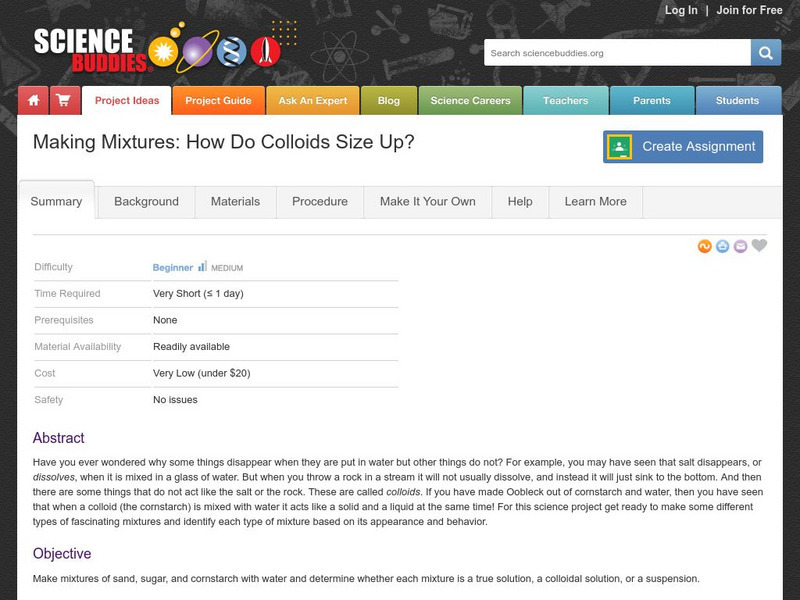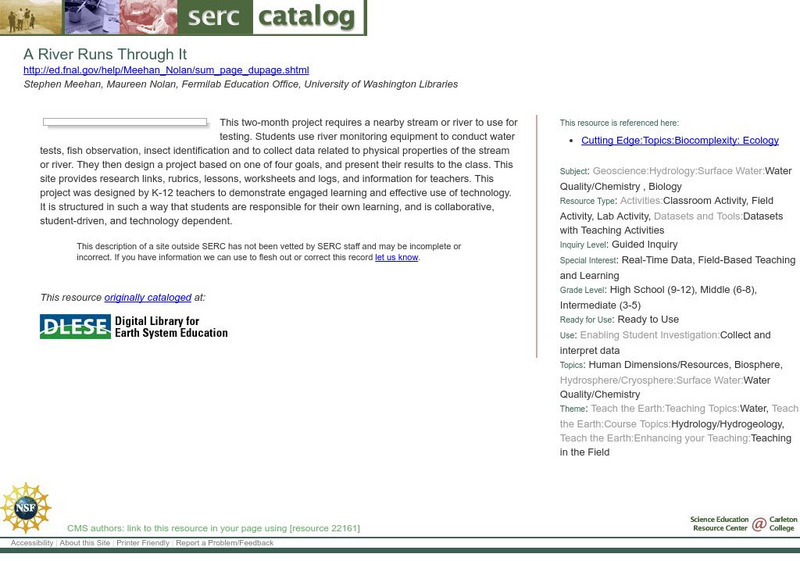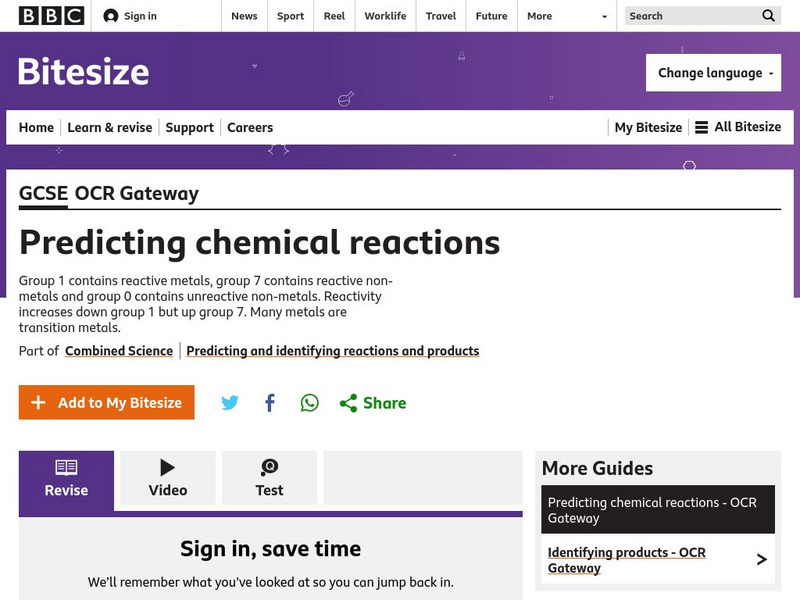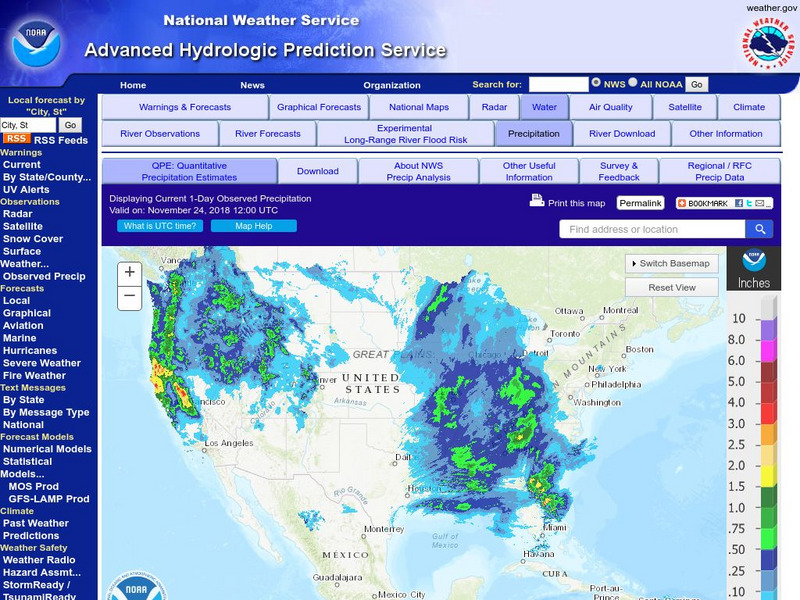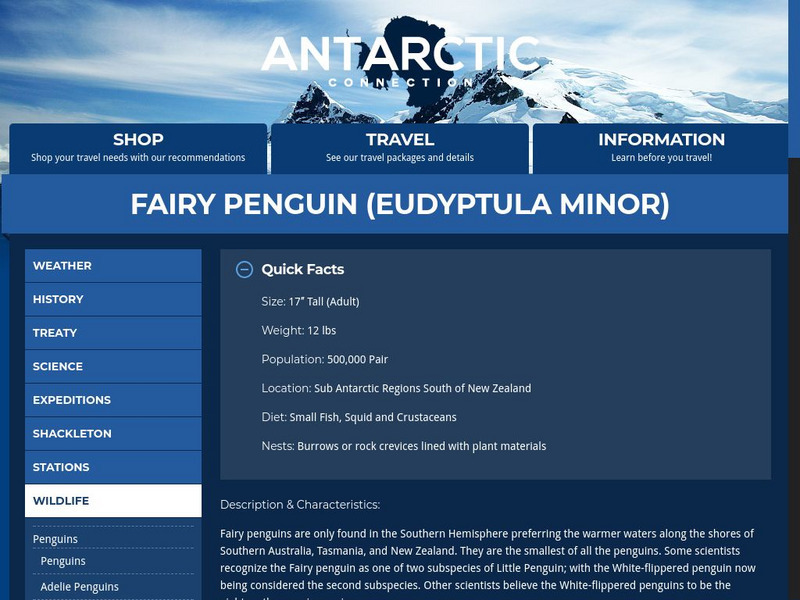Hi, what do you want to do?
Massachusetts Institute of Technology
Mit: Blossoms: Will an Ice Cube Melt Faster in Freshwater or Saltwater?
Engage young scholars in the study of the ocean and saltwater with these activities. Students will see that saltwater has different physical properties than freshwater - mainly density. This instructional activity can serve as a...
Indiana University
Indiana University Bloomington: Fossil Identification Chart [Pdf]
A flowchart students can use as a tool to identify fossils based on their physical characteristics, e.g., segmentation, symmetry, lack of a skeleton, etc.
Science Buddies
Science Buddies: Getting Critical Over Colloids
What is a colloid? If you have made Oobleck out of corn starch and water, then you know that a colloid is a mixture that acts like a solid and a liquid at the same time. This activity helps you determine the critical factors that...
Museum of Science
The Atom's Family: Phases of Matter
Help the Phantom choose a material and observe the changes at different temperatures in the molecule chamber. What happens to the elements or molecules as the temperature changes?
Science Education Resource Center at Carleton College
Serc: A River Runs Through It
This two-month project requires a nearby stream or river to use for testing. Students use river monitoring equipment to conduct water tests, fish observation, insect identification and to collect data related to physical properties of...
Indiana University
Indiana University Bloomington: Reference Documents: Calcite [Pdf]
A fact card describing the characteristics of calcite and its presence in limestone, its chemical and physical properties, and the composition and structure of a calcite unit cell.
Alabama Learning Exchange
Alex: What's the Matter: A Sinker or Floater?
Students will explore matter that sinks or floats when submerged in water and that matter is categorized as either a sinker or a floater. Students will work actively in small, cooperative learning groups as well as gather in a whole...
Indiana University
Indiana University Bloomington: Geo Notes: Composition of Coal [Pdf]
Discusses the chemical and physical composition of coal and why understanding the chemical properties of coal is important for knowing how to process and use it.
American Chemical Society
American Chemical Society: Best of Wonder Science: Ice of a Different Color [Pdf]
An experiment to test what happens to water when salt or sugar is added and it is then frozen into ice cubes. Students also explore the ice's physical properties by rubbing cubes on sandpaper and dropping a heavy object on each type.
BBC
Bbc: Gcse Bitesize: Predicting Chemical Reactions
This lesson focuses on predicting chemical reactions using The Group 1 elements in the Periodic Table are known as the alkali metals. They include lithium, sodium and potassium, which all react vigorously with air and water. It provides...
Other
Us Peroxide
US Peroxide is the leading supplier of hydrogen peroxide and peroxygen based technologies and services for environmental applications. Their site includes information about hydrogen peroxide such as common applications, physical and...
National Weather Service
National Weather Service:climate Prediction Center: Daily Precipitation Analysis
Find real-time daily precipitation analysis for the United States, Mexico, and South America as well as accumulated precipitation maps for the past 30 or 90 days.
Chem Tutor
Chem Tutor: States of Matter
A very descriptive site that allows students to understand the different states of matter at the atomic level. Also discusses the process of phase changes and displays phase change graphs. Thermochemistry is also touched upon for high...
Texas Instruments
Texas Instruments: Forensics Case 8: Using Soil Characteristics to Link Suspects
In this activity, students measure pH, conductivity, and water absorbency of different samples of soil. They use these characteristic properties to identify soil samples. They use the physical and chemical characteristics of soil samples...
A-Z Animals
A Z Animals: Animal Facts: Oyster (Ostreidae)
Provides photographs and a fact card about the oyster. Discusses where they are found, physical characteristics, the four groups of oysters, how they filter water for food using their gills, predators, reproduction, and the impact of...
Other
Antarctic Connection: Fairy (Little Blue) Penguin
This site takes a look at the Fairy Penguin, the smallest of all the penguins and found in warmer waters along the shores of Southern Australia, Tasmania, and New Zealand. Content includes a focus on this penguin's physical...
ClassFlow
Class Flow: Forces Land
[Free Registration/Login Required] This flipchart describes physical characteristics of landforms and bodies of water including mountains, plains, plateaus, valleys, rivers, bays, and lakes.





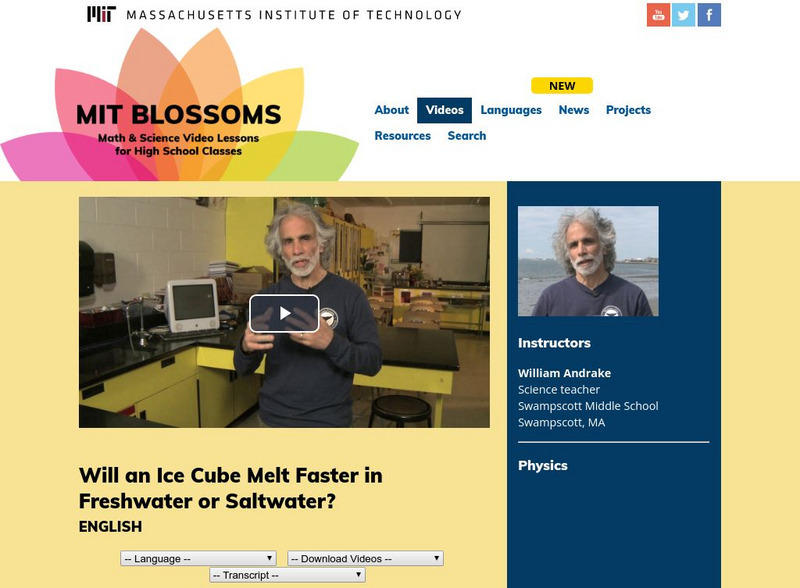
![Indiana University Bloomington: Fossil Identification Chart [Pdf] Graphic Indiana University Bloomington: Fossil Identification Chart [Pdf] Graphic](https://static.lp.lexp.cloud/images/attachment_defaults/resource/large/FPO-knovation.png)
